Beijing’s Ancient Observatory
- By Maggie Masetti
- August 20, 2010
- 10 Comments
I just got back from a trip to Beijing, China, which was a very interesting experience. Beijing seems to me to be a study in contrasts – ancient, yet very much rebuilt. Structures from the 15th century Ming Dynasty lasted for centuries, and some still exist today, yet later conflicts like Second Opium War (1860) and the Boxer Rebellion (1900) caused many of these ancient structures to be destroyed. And what wasn’t destroyed by man was often burnt down due to lightning! The Ancient Observatory in Beijing was also affected by these more modern conflicts as well.
The Observatory actually dates to 1442 (it pre-dates telescopes). It’s one of the oldest, if not the oldest observatory in the world. Astronomers used it during the Ming and Qing dynasties. They would report on the movements of celestial bodies to the Emperor, who was considered the “Son of Heaven”. Later on in the 1600s, Jesuit priests visited China, and many of them stayed. They brought “modern” astronomical instruments with them. A Jesuit named Ferdinand Verbiest was put in charge of this observatory by the emperor and in 1673 he had some of the instruments from the 1400s rebuilt. During the Qing Dynasty (the last ruling dynasty of China), some of these instruments were stolen by France and Germany, though near the end of WWI, they were returned.
The Observatory, on a platform about 50 feet high, is actually built on part of the old Ming Dynasty wall that once upon a time surrounded Beijing. The eight instruments displayed on this platform date to the Qing dynasty. There are many other instruments (some replica, some not) located on the ground and parks of the observatory.
The Qing instruments are really representative of the time period they were created in – when east met west. The technology is western, but the designs are pure Chinese.
The front of the observatory looks like this:
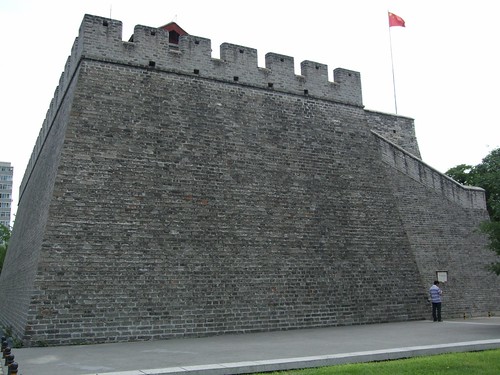
The Observatory is actually simple to get to – we tried to convince several taxis to take us there, but we couldn’t quite convey where we wanted to go. In the end, we took the subway, which was surprisingly easy. You can go anywhere you want for 2 Yuan and all the directions, from the ticket computer kiosk to the list of stations, are in English as well as Chinese. The Ancient Observatory is literally feet from the southeast exit of Jianguo Men station. After we got out of the subway station, we spent 5 minutes consulting our map for the location of the observatory before we realized we were standing right in front of it!
First we wandered throughout the courtyard looking at the instruments down there.
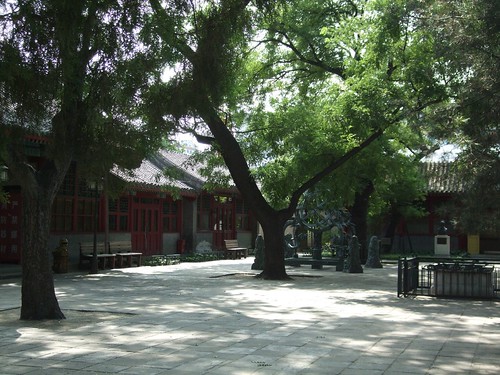
Some, if not all, of these are replicas, like this armilla. An armilla (or armillary sphere) is used to represent the heavens and can be used to demonstrated the motion of the stars around the Sun.
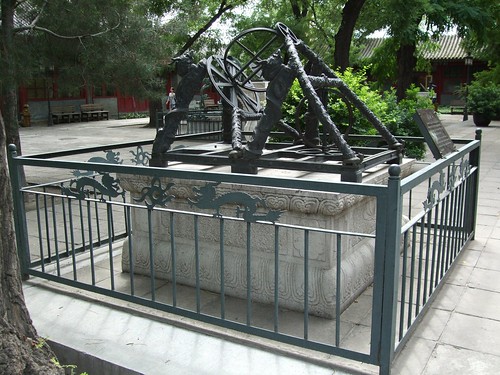
This reproduction “square table” is used to determine the azimuth of celestial bodies.
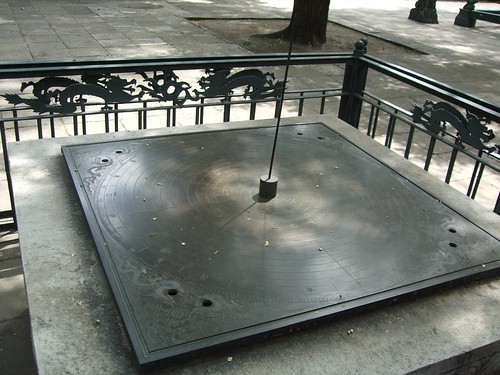
There are also several buildings with displays and exhibits.
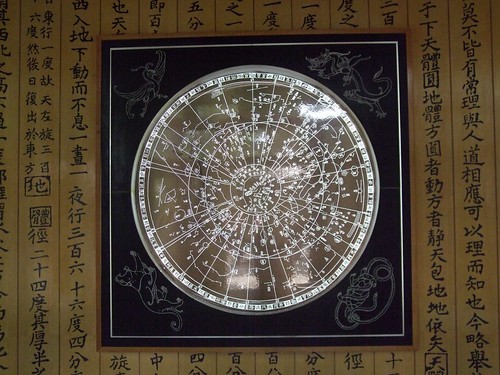
Here is a Chinese-invented (Northern Wei Dynasty) “steelyard clepsydra” – it is a type of water clock.

This instrument, invented by Guo Shoujing in the Yuan Dynasty can measure the position of the sun and can also be used during solar eclipses.
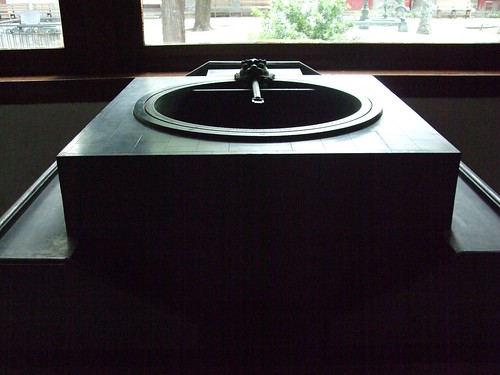
There are many busts of famous Chinese astronomers throughout the courtyard like Xu Guangqi, who worked with Jesuits Matteo Ricci and Sabatino de Ursis to translate Western texts into Chinese, including part of Euclid’s Elements. He was also tasked by the Emperor to reform the Chinese calendar. This was the first major collaboration between eastern and western scientists.
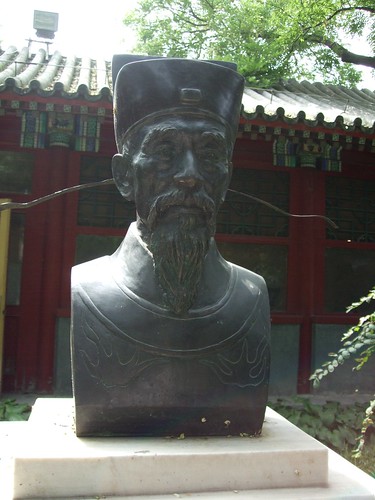
There is also Zheng Heng, whose constributions to science are significant. He invented the world’s first water-powered armillary sphere and first seismometer, improved previous Chinese calculations of pi, and had a star catalogue of 2500 stars. He had pretty accurate theories about the Moon’s shape (spherical), the nature of solar and lunar eclipses, and thought that the Moon was illuminated by reflected sun on one side and dark on the other.

Here we are back at the actual observatory:
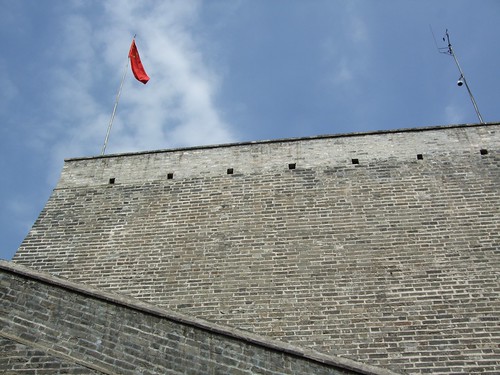
And here are the Qing Dynasty instruments on the roof.
A theodolite from 1715, used for determining azimuth and altitude:
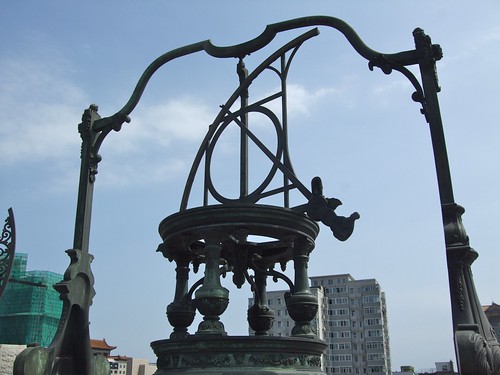
This one, also from 1673, is used for determining azimuths:
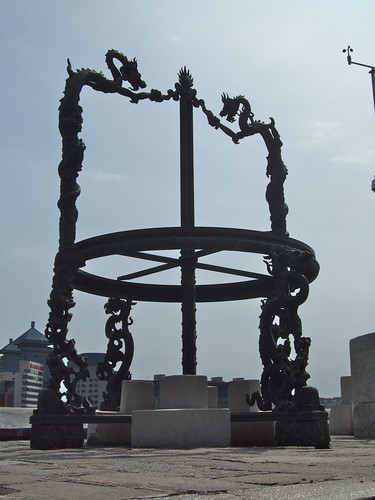
The Asian details on these instruments are beautiful:
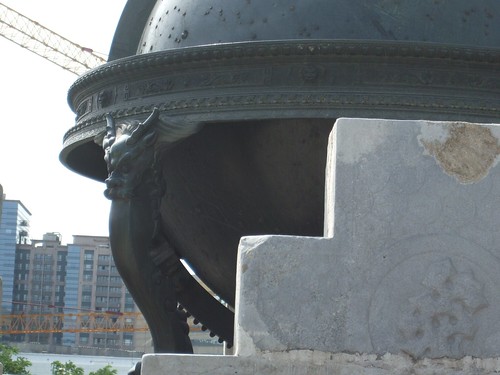
A few more instruments, mostly quadrants and armillas:
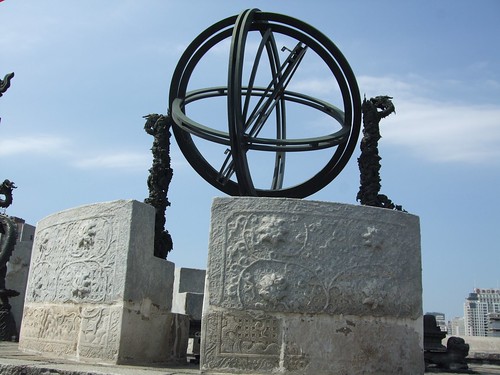
The antique instruments with the modern Beijing skyline behind them:
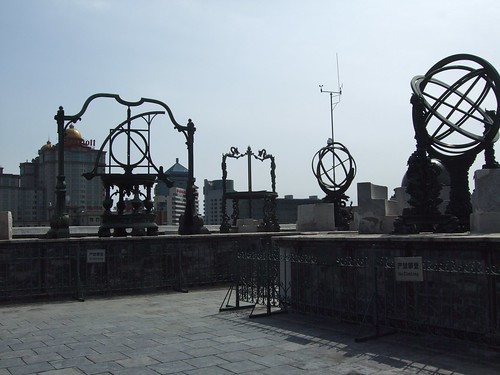
After we got down off the roof, we explored the adjoining gardens where there are more instruments and busts of Chinese astronomers:
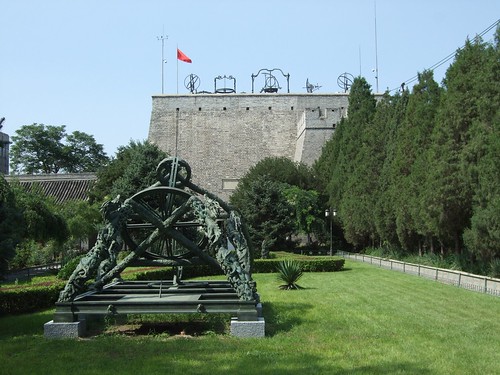
Can you guess what time we were at the Observatory?

It’s really interesting to see the kinds of astronomical observations that were being made hundreds of years ago – but it’s also interesting to think about the things we are able to measure and study today!
If you’d like to read more about the Ancient Observatory’s role in astronomy, here are some links:


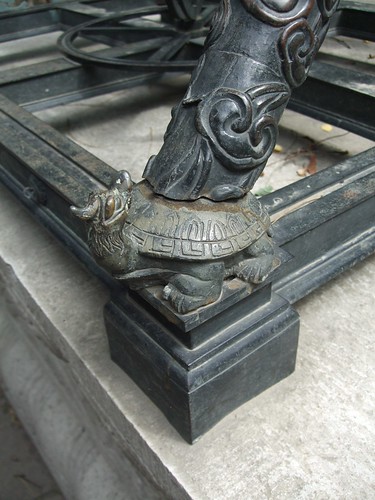
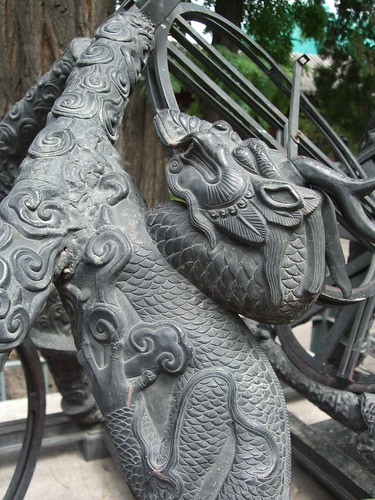
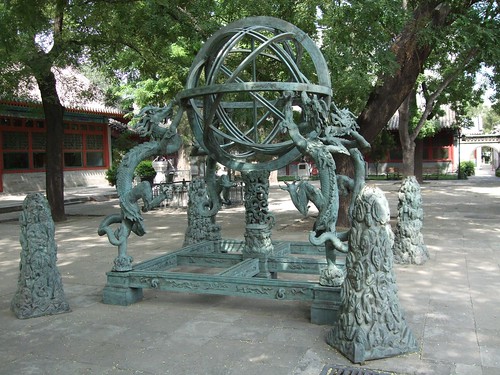
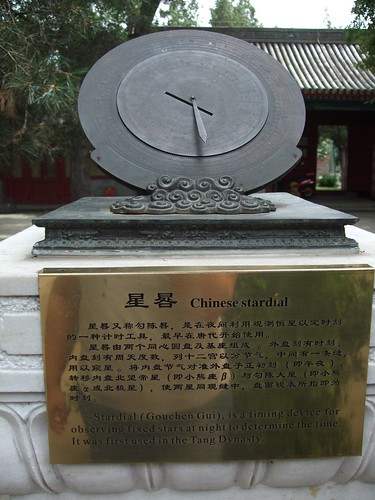
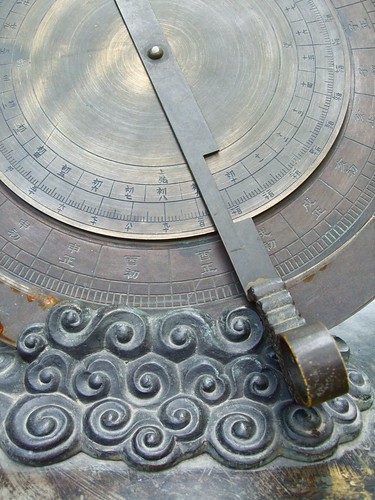
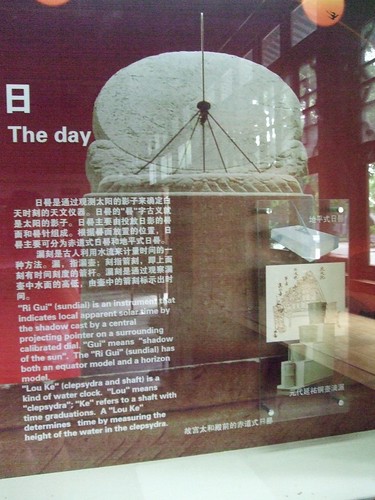

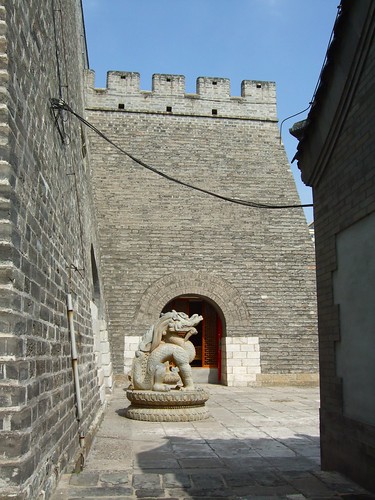
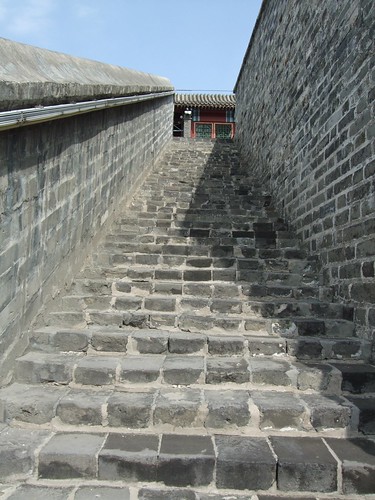
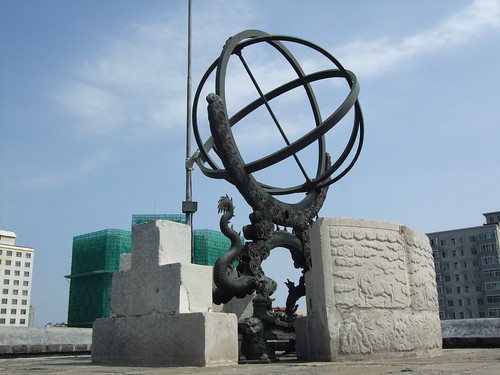
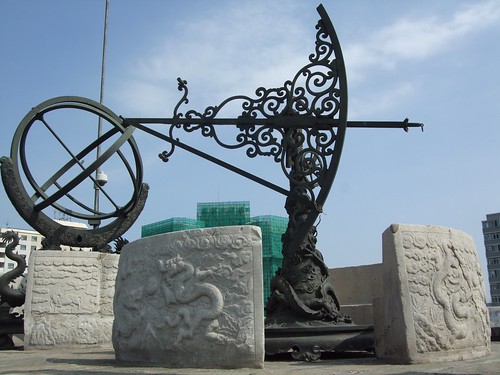
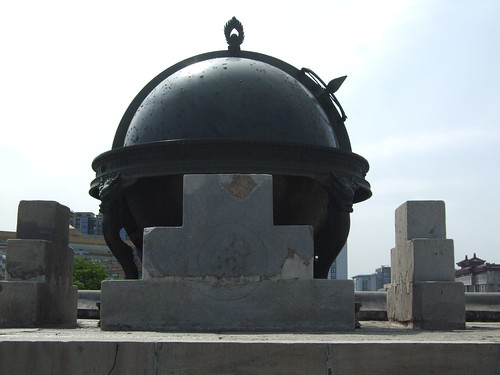
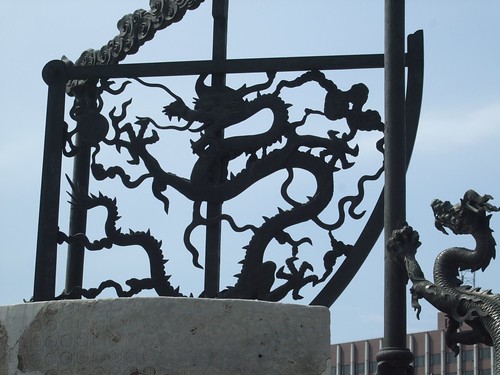
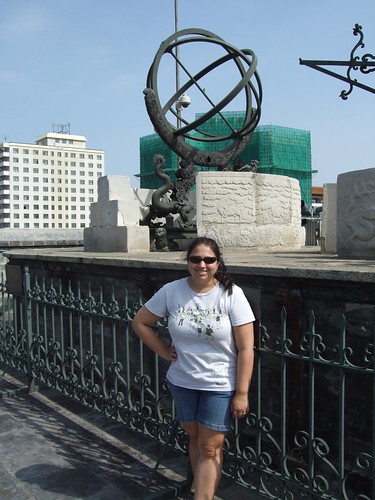

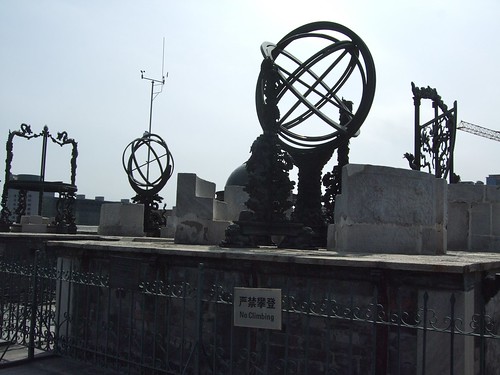
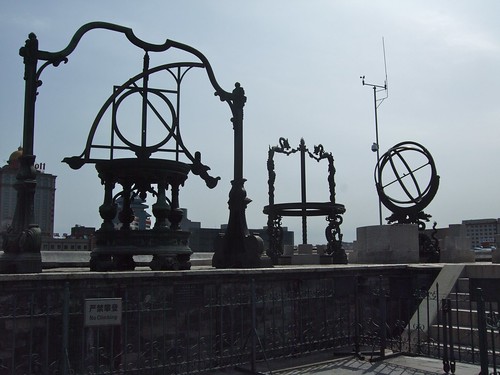

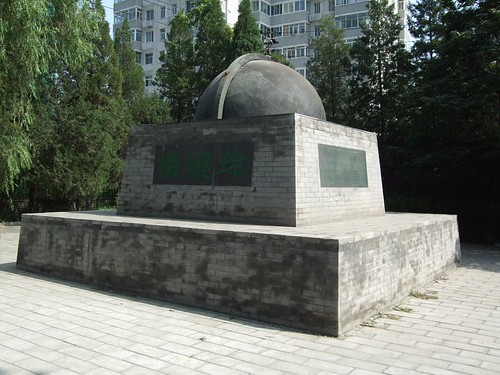

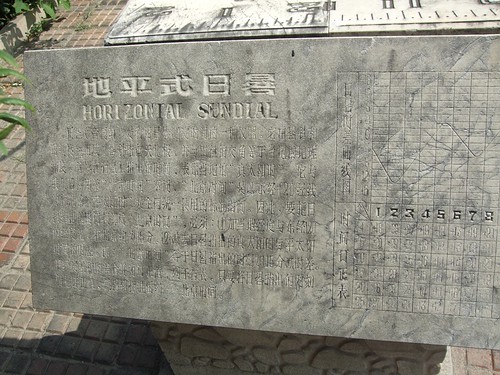

Oh this was great, almost like being there and very informative too!
Maggie, thanks very much! I was so disappointed that my two visits to Beijing couldn’t include this fascinating place. Your photos and descriptions really help me to envision it. Like Jean said, it’s almost like being there!
Thanks Karen! And thanks for recommending it! I hope you’ll get to check it out next time – it’s fairly quiet and restful after some of the other busy tourist sites! Worth a visit if you can fit it in! :-)
Informative! Well done. This povides a Nice break point for people planning only to tour through those crowded sites.
Thanks very much! It was a nice peaceful place to visit after the more crowded sites!
[…] last time I visited an observatory, it was an ancient Chinese one. This time I visited one a little closer to […]
Thank you for a Great Post! This has helped me heaps in my current research projet.
Amazing site, the photos are great, i love them. Keep up the good work :)
Your beautiful photography reminds me that the world is such a beautiful and expansive place.
Thank you so much for helping me “see” that today, Maggie.
This is such a beautiful article. You did a great job. Well done!